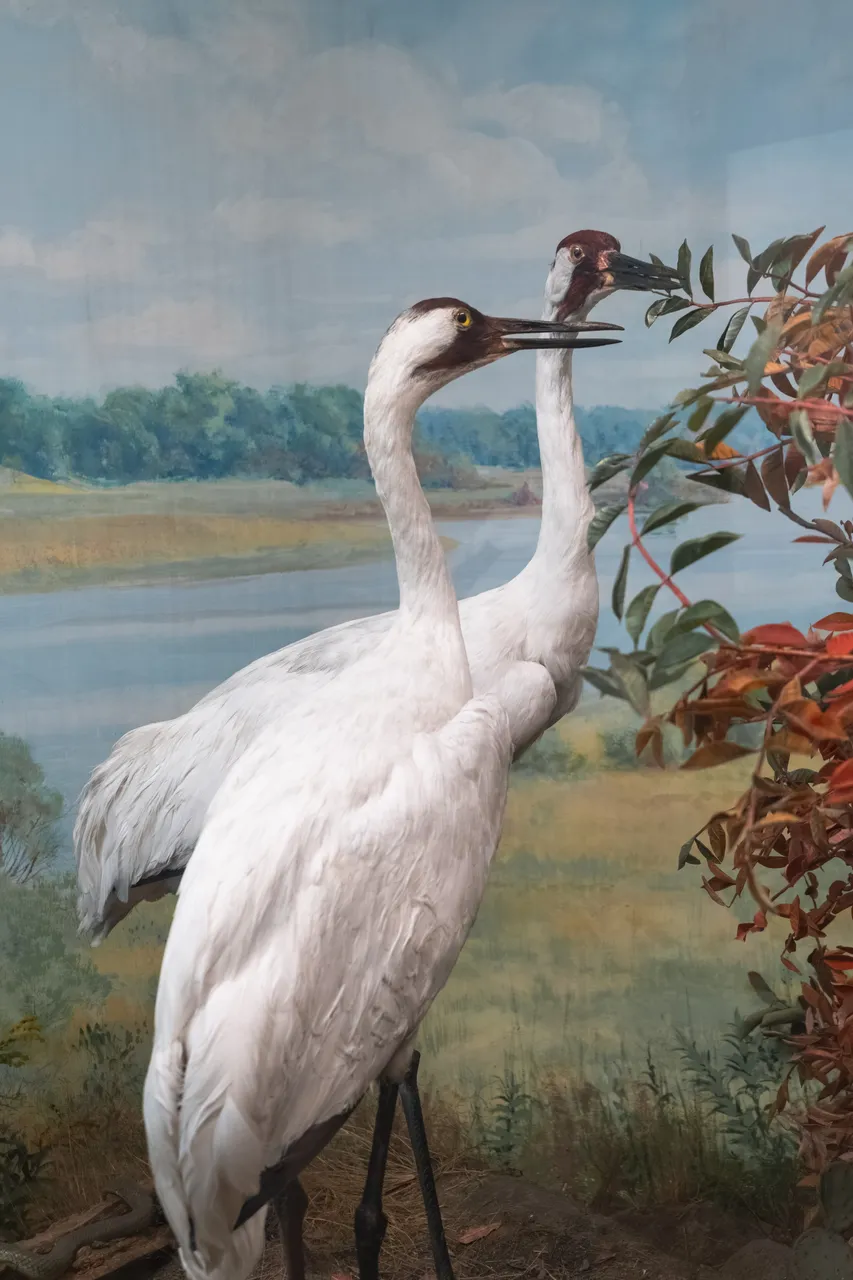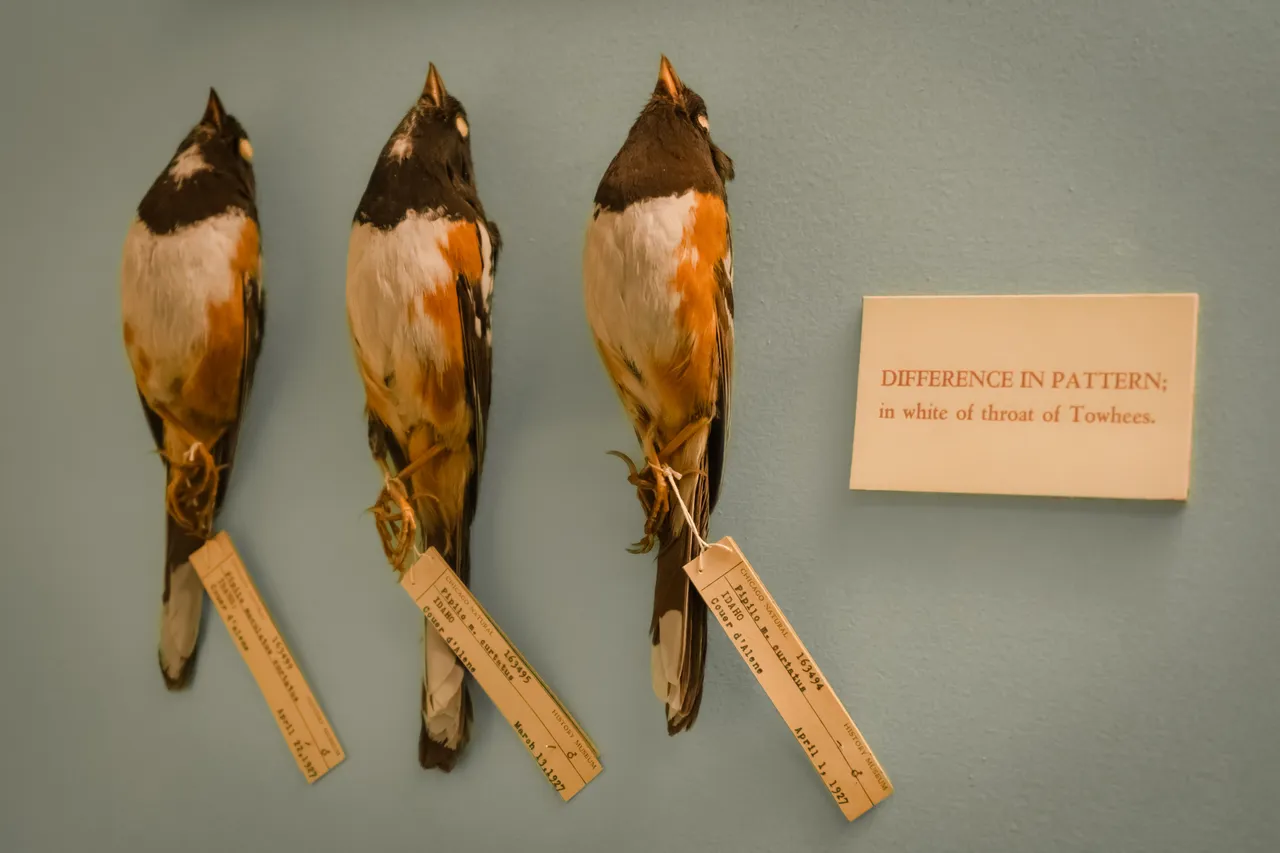At the Field Museum of Natural History in Chicago, IL. the Ronald and Christina Gidwitz Hall of Birds is a fascinating place for any birdwatcher to visit. There is traditional taxidermy and nteractive displays with bird maps and educational videos,. The projections that adorn the walls with live-action silhouette footage and environmental sound make it an immersive experience.
The museum started building the bird collection from a part of the World’s Columbian Exposition of 1893—and today research and collecting continue. The Field Museum’s scientific bird collection has more than 530,000 specimens, including eggs and nests. It represents 90 percent of the world’s known bird species, several of which can no longer be found in the wild and is the third largest collection in the United States
 Sandhill Cranes
Sandhill Cranes
 Towhees
Towhees
This display, Variation is the rule in nature, presented several different study skins of the same bird species to show how birds vary depending on factors including geography. The bottom of the display holds 12 different subspecies of Song Sparrow. Downy Woodpeckers, Towhees and Canada Warblers are also used. An accompanying informational sign explained study skins: “Birds used in this exhibit are made into study skins. These study skins, in which the head is in line with the body, wings folded, and feet crossed, are conventional for museum study. The method permits easy filing of specimens, available for study. The label, tied to each specimen, is very important. On it should be written the place and date of collecting and other available data. source


The wood stork (Mycteria americana) is a large, bald-headed wading bird native to the Americas and the only stork species that breeds in North America


The Shoebill Stork lives in tropical East Africa in large swamps from South Sudan to Zambia. They are large birds with some individuals reaching up to 60 inches (152 cm).
 Green Catbird- Australia
Green Catbird- Australia
 Blue Bird of Paradise
Blue Bird of Paradise
Birds of paradise inhabit rainforests in Papua New Guinea, Eastern Indonesia and Eastern Australia, and mainly feed on fruit and some insects.

The Ruff (Calidris pugnax) is a medium-sized wading bird that breeds in marshes and wet meadows across northern Eurasia.
 Whooping Crane
Whooping Crane
 Great Blue Heron
Great Blue Heron
 Greater Flamingo
Greater Flamingo
 Red-faced Cormorant
Red-faced Cormorant
 White Pelican
White Pelican
I would much rather see birds flying in the wild, but I do appreciate all the research the museum does and the opportunity to learn more about them.
20% of this posts rewards go to the Feathered Friends Community. @hive-106444

